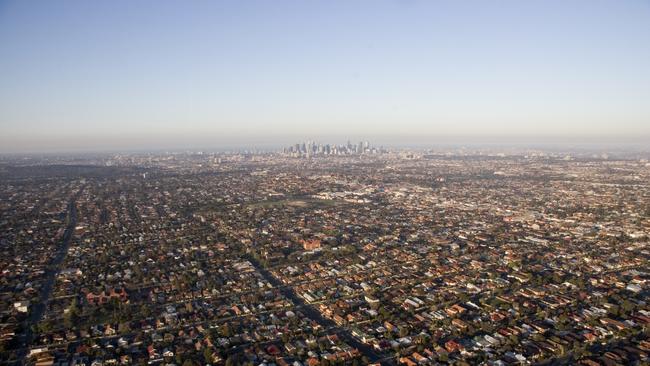Migrants grow the economy, but our share of it is getting smaller
It is true that growing Australia’s population will make the size of the overall economy larger, because there is a bigger problem it creates.

Opinion
Don't miss out on the headlines from Opinion. Followed categories will be added to My News.
Australians are going backwards as suburbs strain under population pressure.
It is true that growing our population will make the size of the overall economy larger, because there is a bigger market with more people spending more money. However, what matters is not the size of the overall economic pie, but the slice that every Australian is receiving.
And that slice is getting smaller by the day.
Last week the Australian Bureau of Statistics confirmed Australians are now getting poorer, faster, due in large part to the federal government’s out-of-control migration program.
When the effect of population is stripped from the calculations, Australia’s economy is getting smaller. On an individual level, living standards have now declined for six quarters in a row. This is the longest decline since records began in 1973.

The Prime Minister has now been in office for nine quarters, seven of which have seen negative per capita growth. This is the most negative quarters of per capita growth of any government since Gough Whitlam’s.
But Australians do not need statistics to tell them they are in a recession. They can see it and feel it in their lived experience. Congestion on the roads and public transport is increasing. It takes longer to get an appointment at the local GP. Many suburbs now have insufficient childcare options. Local schools are under pressure. Rental affordability has plummeted, and anyone around Sydney heading to an inspection this weekend will be met by a cast of thousands.

It is a very basic case of supply and demand, something we all understand. The federal government has brought in over 1.1 million new migrants on a net basis over the past two financial years – this is more than one new net arrival every single minute.
Yet what has not been provided are the necessary services and infrastructure to accommodate this dramatic surge.
The problem is not at all with the migrants themselves, the overwhelming majority of whom come to Australia because we are a great nation which offers peace, freedom, democracy, and the chance of a better life for all of those who work hard and play by the rules.
Indeed, Australia has run one of the world’s most successful immigration programs post-World War Two, which has enriched our nation and enhanced our economy and way of life. Long may that continue.
But there are three tests which must be met for a migration program to be successful. It must be planned for. It must have the consent of the community. And it must be targeted to areas of critical economic need. The current program has failed all three tests.
This massive increase in our migration intake has simply not been planned for. On the simple matter of where people will live, enough houses have not been built. The federal government is already 25 per cent behind on its monthly target to build 1.2 million homes in the next five years. The reality is you need the infrastructure and services in place before the people arrive.
The community no longer backs mass migration, because their concerns and voices have not been considered or heard by the political class in Canberra. A recent survey by the Institute of Public Affairs found that 60 per cent of Australians want there to be a pause on the intake of migrants until adequate infrastructure is in place. And 71 per cent said they agreed that the current migration intake is making it harder for young Australians to afford their own home; just 12 per cent disagreed.
And the migration intake has not helped alleviate Australia’s crippling worker shortage. The current number of job vacancies is still a half higher than before Covid. One in five businesses still cannot find enough workers to fill shifts. Yet some 1.1 million migrants have arrived post-Covid; clearly, they are not filling the vacant jobs.
Treasurer Jim Chalmers boasts that this big spending government has prevented Australia from entering a technical recession. While adding more migrants may prop up the official economic figures, Australians understand that their quality of life is spiralling downwards.
Daniel Wild is the Deputy Executive Director of the Institute of Public Affairs





